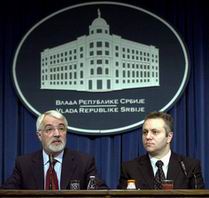- Serbia
Get to know Serbia
- Citizens
Culture and science
Health services
Pension and disability insurance
- Business
Employment
Economy
- Media
- Government
- Contact
Keep in touch
Contact form
Back
Keepin touch
Whether you have a question, comment, suggestion or any problem in the purview of the government, send us your message and we will try to respond as soon as possible. If your problem is not in our purview, we will forward your message to the relevant institution.
Q:
A:
Agreements with IMF, World Bank send positive signals to foreign investors
Belgrade,
28 April 2004
Serbian Deputy Prime Minister Miroljub Labus and Minister of Finance Mladjan Dinkic told a press conference today that the agreement which a Serbian government delegation reached with representatives of the International Monetary Fund (IMF) during a recent visit to Washington will mark the end of the three-year extended arrangement with the IMF. The arrangement will give Serbia another 15 percent write-off ($660 million) of its debt to the Paris Club in mid-2005.
The agreement with the IMF will send a positive signal to prospective investors that Serbia’s economy is back on the reform path after a standstill in 2003, said Labus.
The agreement will allow Serbia to draw $140 million in two tranches under the extended arrangement with the IMF, the Deputy Prime Minister said, adding that the country will also receive a $120 million loan from the World Bank and a further €95 million in assistance from the European Union this year.
According to Labus, Serbia’s industrial production in the first three months of the year exceeded the projected figures, approaching a 11.7 percent year-on-year increase. Industrial output in March 2004 rose 17.6 percent against the same month of 2003, he went on to say, adding that overall economic growth this year is likely to outstrip initial forecasts.
The new loans will not make Serbia overindebted, Dinkic insisted and noted that the country will cover its budget gap. Serbia, which has agreed on a 30 billion dinar budget deficit with the IMF, will cover the gap by raising revenues and cutting spending. The announced World Bank loan and the EU assistance will also be used to close the gap, the Minister said, adding that the country will cash in at least €200 million in sell-off receipts this year.
According to Dinkic, Serbia’s public debt will be below 60 percent of GDP at end-2005, compared with 150 percent of GDP in 2001 and 73 percent in 2003.
On May 4, Ball Packaging will start the construction of a €80 million can plant in Zemun, the Minister said. Also in May, a world’s top car maker will buy a local company currently restructuring, he added.
According to Dinkic, Serbia’s annual inflation rate this year will not exceed 8.5 percent, down from the initially projected 9.5 percent.
The agreement will allow Serbia to draw $140 million in two tranches under the extended arrangement with the IMF, the Deputy Prime Minister said, adding that the country will also receive a $120 million loan from the World Bank and a further €95 million in assistance from the European Union this year.
According to Labus, Serbia’s industrial production in the first three months of the year exceeded the projected figures, approaching a 11.7 percent year-on-year increase. Industrial output in March 2004 rose 17.6 percent against the same month of 2003, he went on to say, adding that overall economic growth this year is likely to outstrip initial forecasts.
The new loans will not make Serbia overindebted, Dinkic insisted and noted that the country will cover its budget gap. Serbia, which has agreed on a 30 billion dinar budget deficit with the IMF, will cover the gap by raising revenues and cutting spending. The announced World Bank loan and the EU assistance will also be used to close the gap, the Minister said, adding that the country will cash in at least €200 million in sell-off receipts this year.
According to Dinkic, Serbia’s public debt will be below 60 percent of GDP at end-2005, compared with 150 percent of GDP in 2001 and 73 percent in 2003.
On May 4, Ball Packaging will start the construction of a €80 million can plant in Zemun, the Minister said. Also in May, a world’s top car maker will buy a local company currently restructuring, he added.
According to Dinkic, Serbia’s annual inflation rate this year will not exceed 8.5 percent, down from the initially projected 9.5 percent.
-
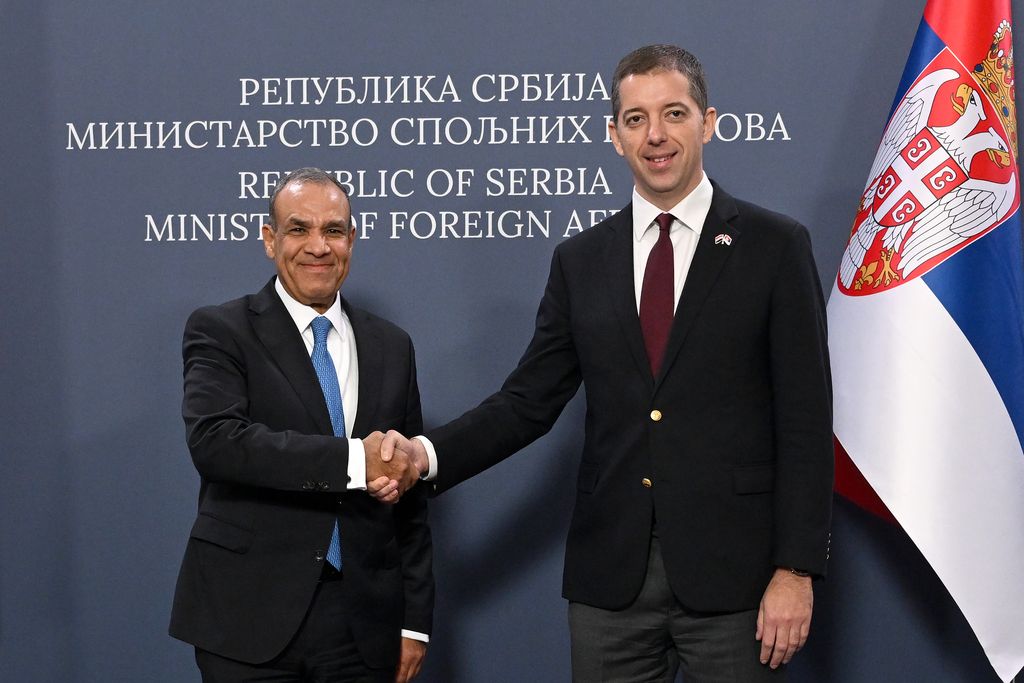 Belgrade, 22 January 2025
Belgrade, 22 January 2025Egypt one of Serbia’s closest partners on international stage
-
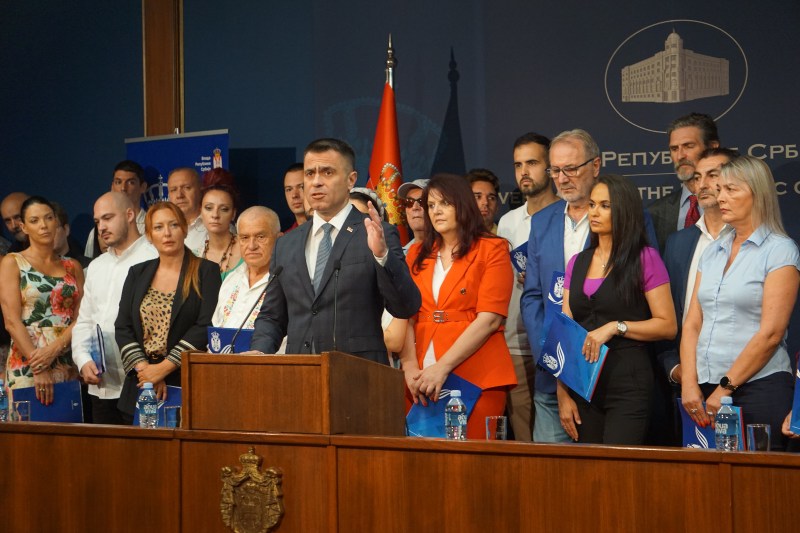 Belgrade, 9 July 2024
Belgrade, 9 July 2024Support for 104 associations in diaspora that preserve Serbian language, culture
-
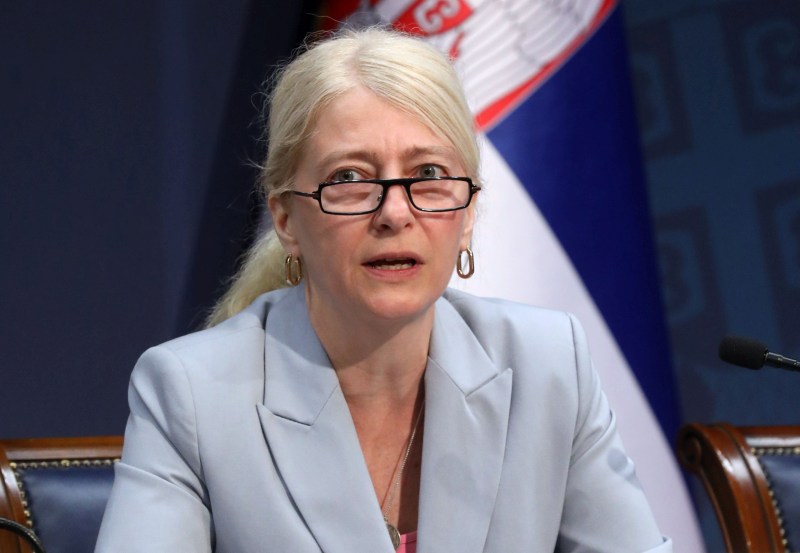 Belgrade, 15 April 2024
Belgrade, 15 April 2024Competition for StarTech grants open until 31 May
-
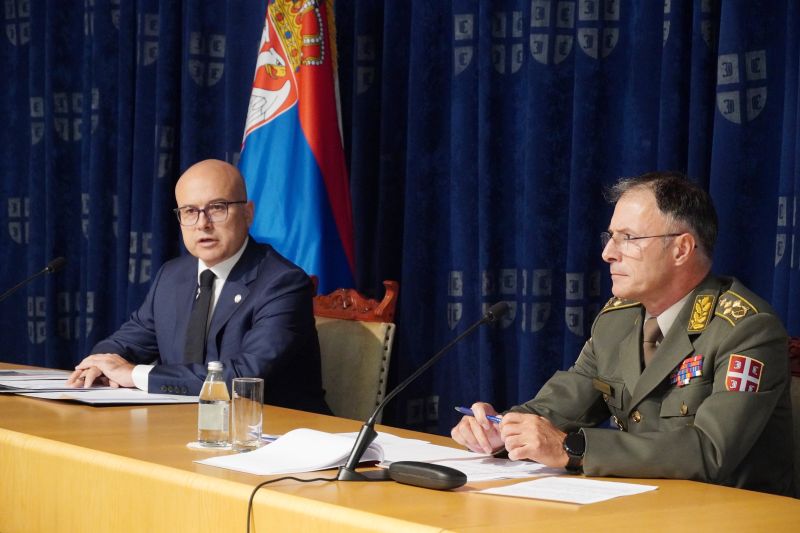 Belgrade, 2 October 2023
Belgrade, 2 October 2023Serbia respects Resolution 1244 and will do everything to preserve peace
-
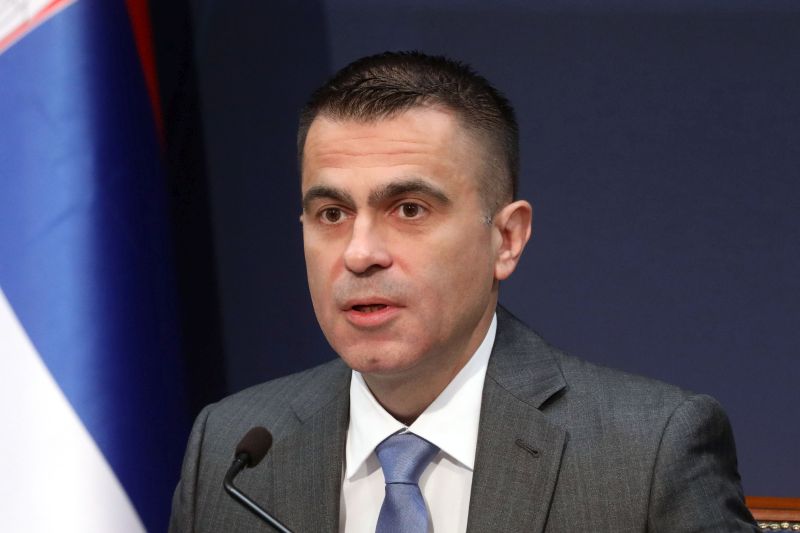 Belgrade, 13 September 2023
Belgrade, 13 September 2023Day of Serbian Unity to be celebrated outside borders of Serbia, Republika Srpska for the first time
-
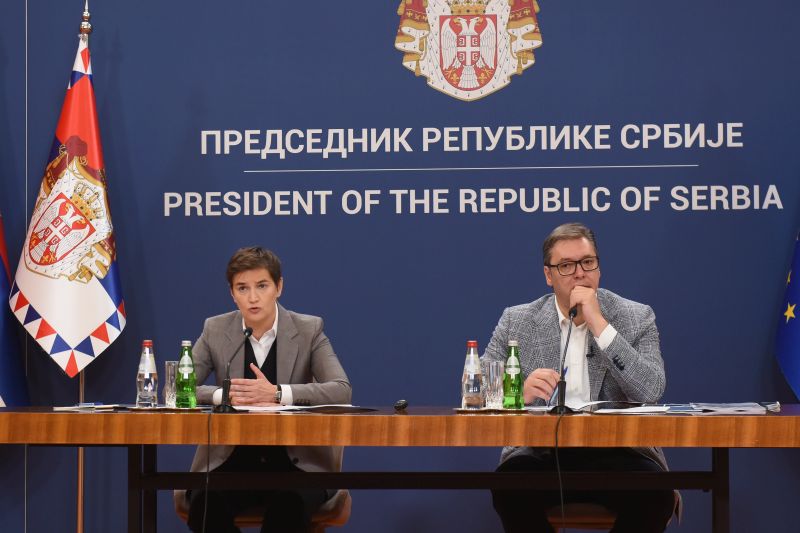 Belgrade, 8 August 2023
Belgrade, 8 August 2023RSD 24.2m in state aid paid out to citizens affected by storm
-
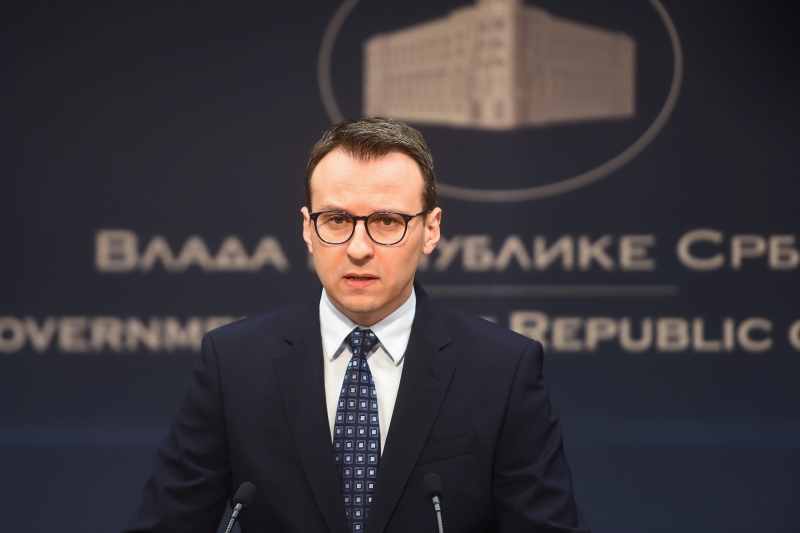 Belgrade, 17 June 2023
Belgrade, 17 June 2023Belgrade is doing everything to preserve peace in Kosovo and Metohija
-
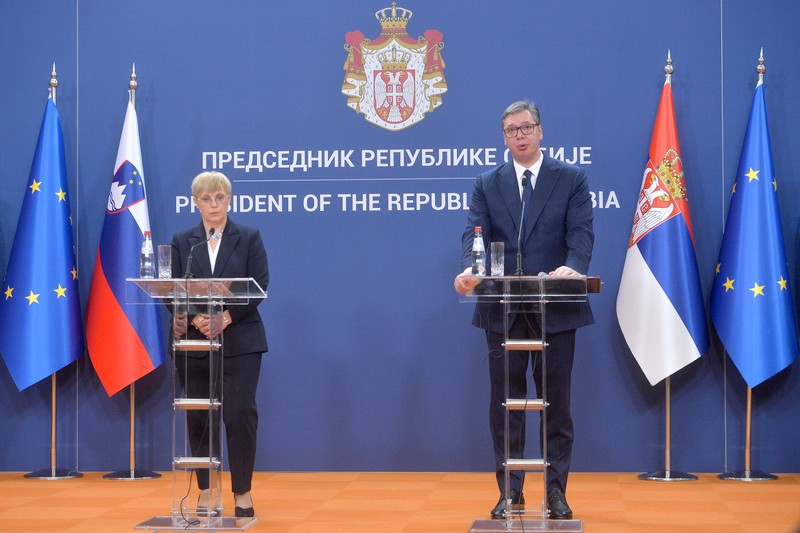 Belgrade, 15 June 2023
Belgrade, 15 June 2023Slovenia will continue to support Serbia on its way to EU
-
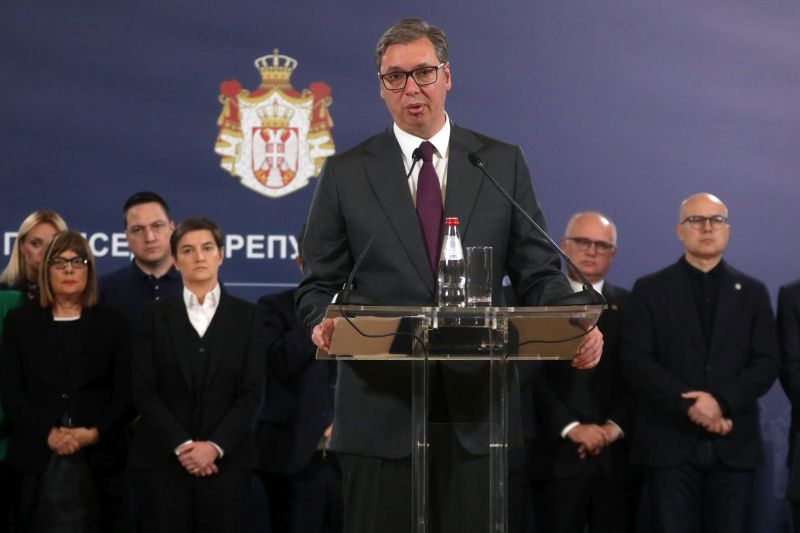 Belgrade, 5 May 2023
Belgrade, 5 May 2023Emergency measures, tightening of conditions for possessing weapons
-
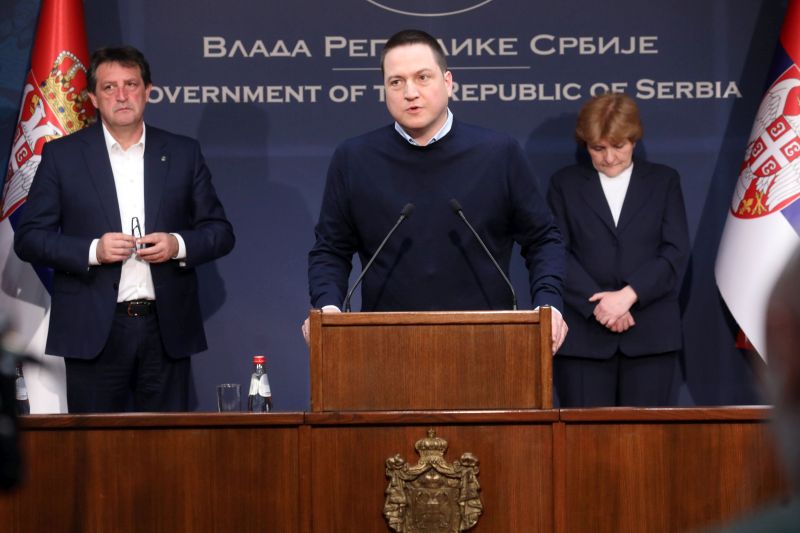 Belgrade, 3 May 2023
Belgrade, 3 May 2023Three days of mourning in Serbia over tragedy at Vladislav Ribnikar primary school

